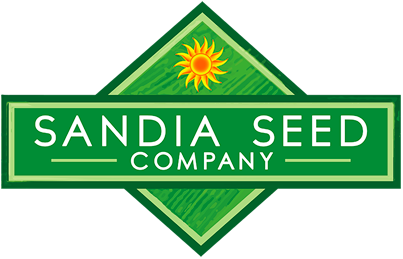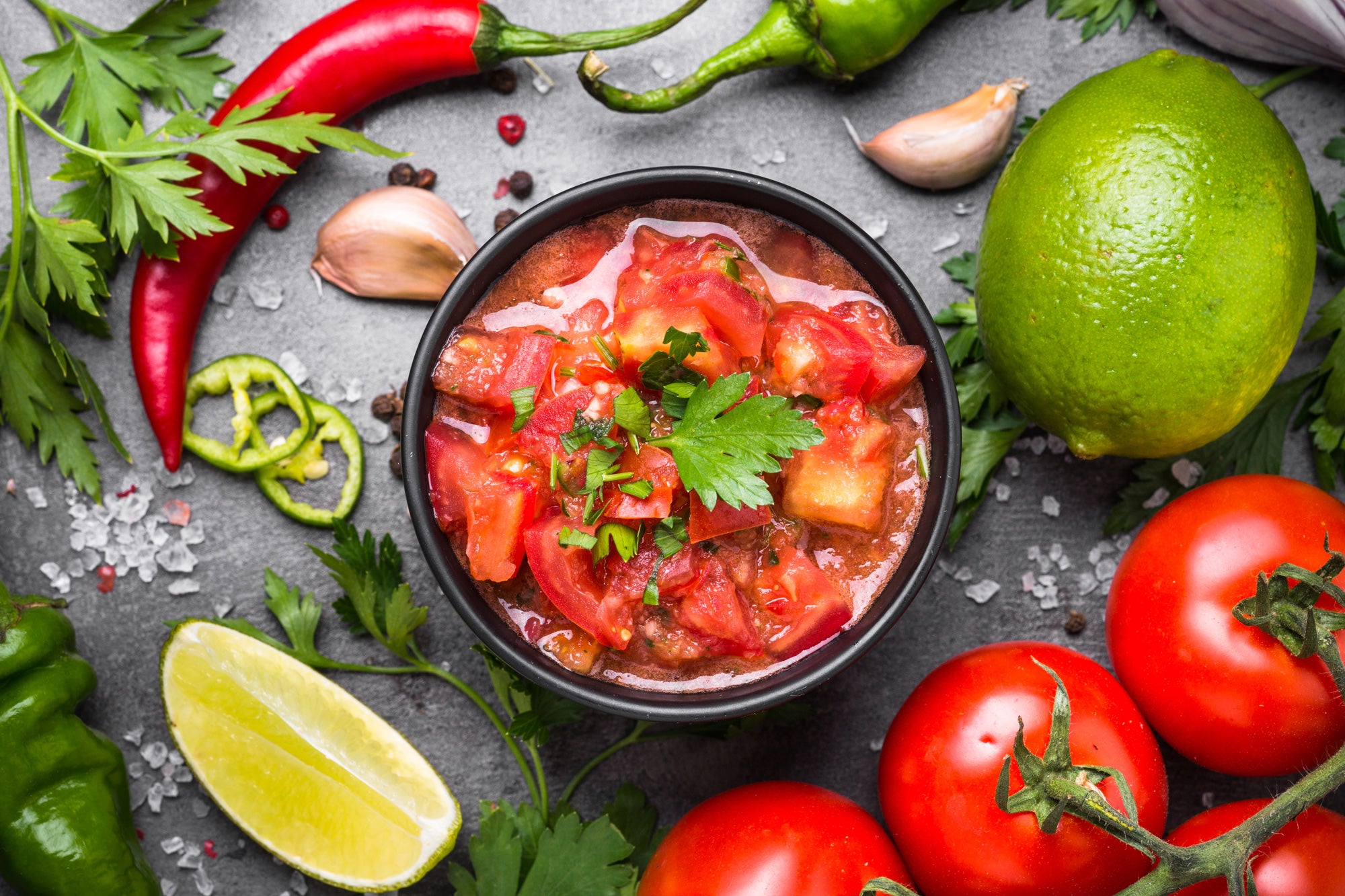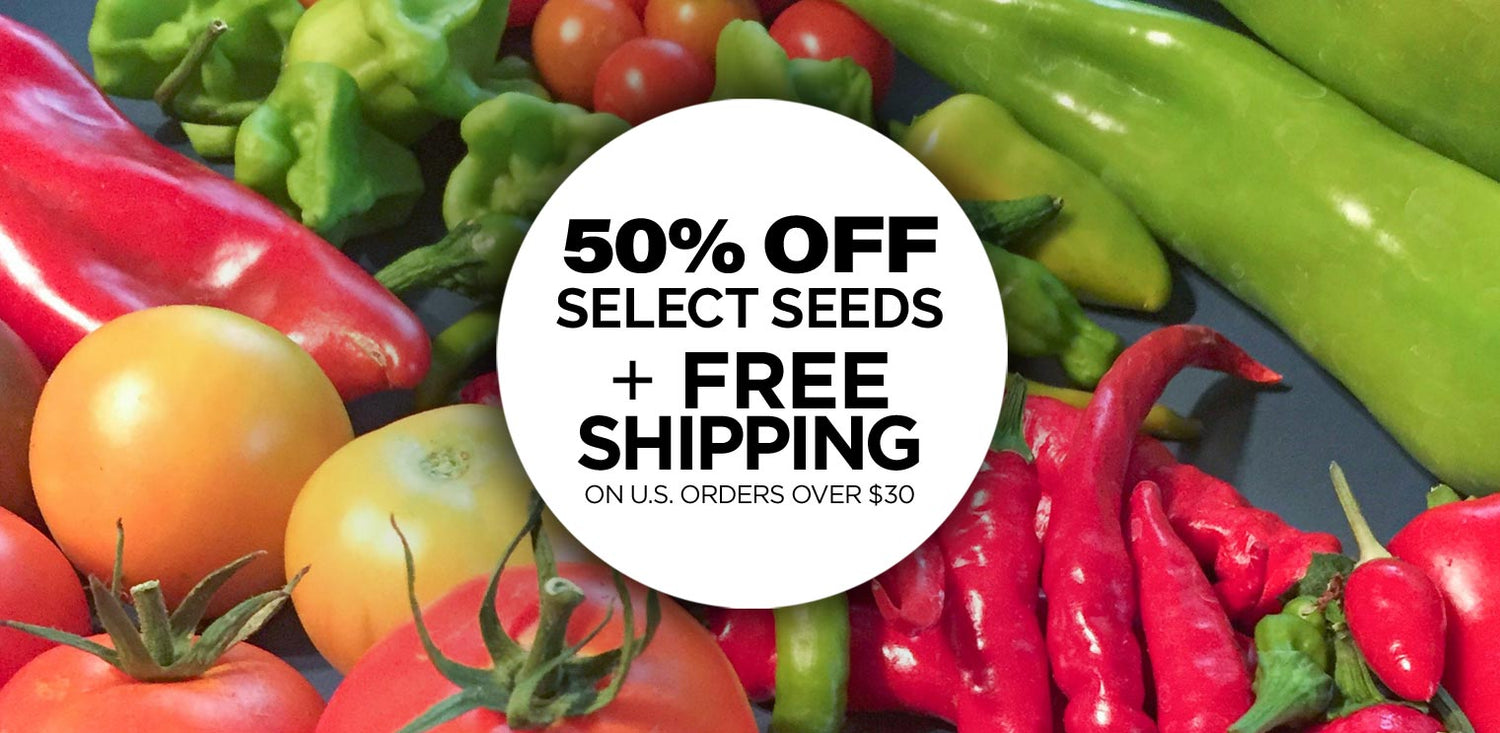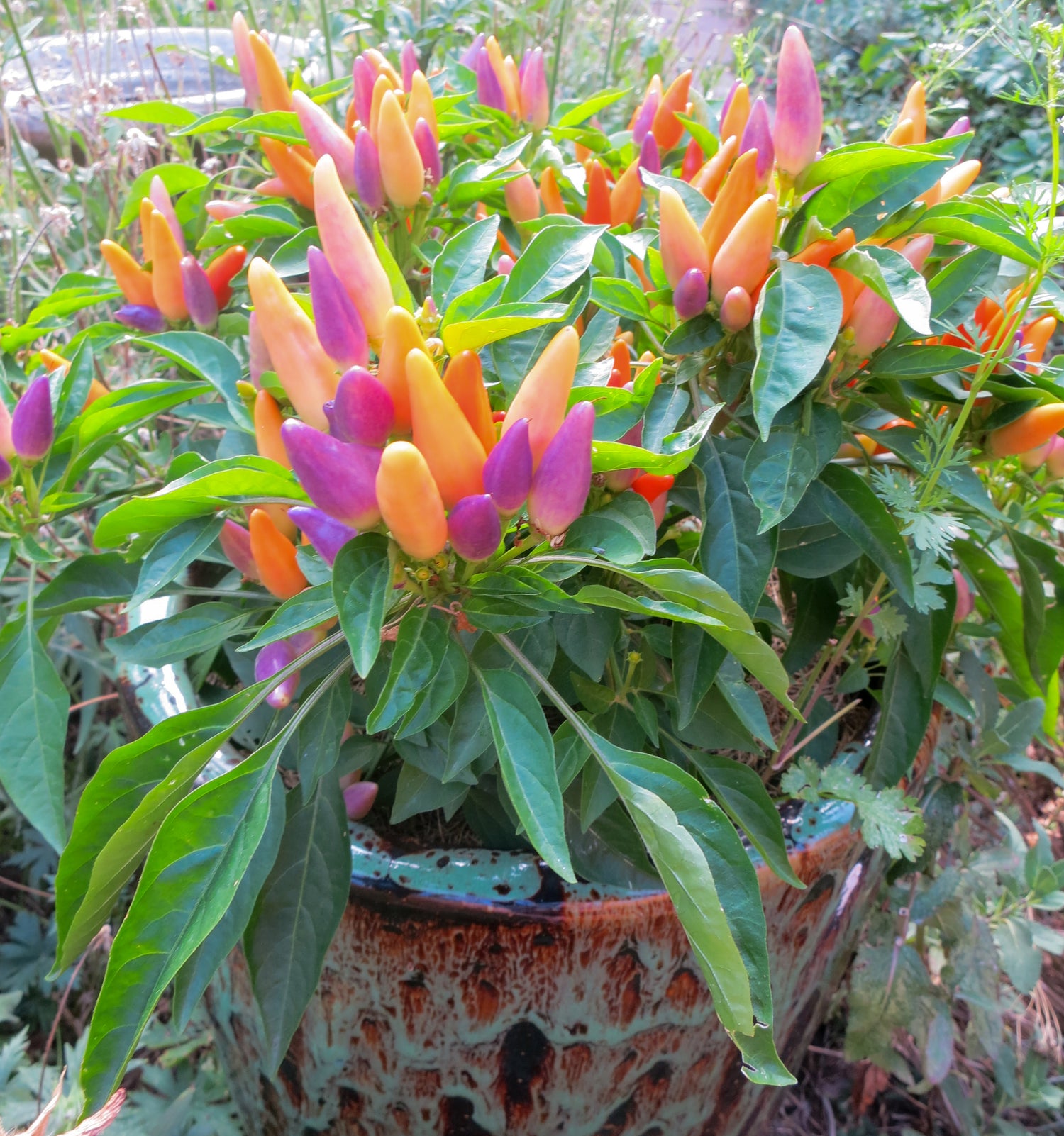
To increase your pepper plant harvests, it is important to provide optimal growing conditions, such as in full sun and warm temperatures, plus good, loamy soil with lots of organic matter. Providing a balanced fertilizer, ideally organic, is also good for continued support of growth.
Here are more tips on growing more peppers:
1. Choose Productive Pepper Varieties:
-
Pick the fastest growing peppers to ensure a long, productive harvest. While all peppers will eventually produce a ton of pods, some take way longer than others such as the super hot Carolina Reaper which takes about 90 days until it starts to ripen pods. Jalapeños, however, can start to produce peppers in just about 65 days, and then will keep producing all season long!

-
Grow Large Pepper Varieties:
The classic New Mexico Chiles including the Big Jims, are known for their extra-large pod size and productive plants. Roasting the large chile pods is easy with their thick flesh and giant size. Or grow the Italian Marconi Pepper, a scarlet beauty that is packed with sweet flavor. We have a ton of extra-large peppers for your garden – check out all of our Big Pepper Seeds and find an extra-large peppers to grow for your kitchen.
-
Diversify: Grow a wide variety of peppers.
This will greatly increase your chance of success! Different types of peppers thrive under varying conditions and are resistant to different pests and diseases, so if one variety or plant is negatively affected, it will not be as likely to affect them all. We have over 100 peppers of the world to try. If you like heat, don't just grow hot peppers, make sure to include some delicious sweet peppers too, they are also great for use for eating fresh, or in recipes and to bulk up and provide flavor in hot sauces or salsas. It's also great to grow some Green Chiles as they can be very large, productive and we think are some of the best tasting peppers you can grow. Green chiles also come in a variety of heat levels so whether you like mild or hot, you'll be happy to enjoy the abundant deliciousness of growing your chile! Our Medium-heat Hatch Big Jim Chile is our best selling pepper because of it's legendary taste, thick flesh and large size. We also always recommend growing Jalapenos, as they are easy to grow and are the gateway drug for growing peppers! We have not just one but 11 types of Jalapeno seeds, so you can grow the colorful and very hot Lemon Spice Jalapeno, or try the Nadapeño No-Heat Jalapeño if you like the flavor and crunch of Jalapenos but without the heat. And of course the classic Early Jalapeno is a classic and regular in our garden every year. Many peppers also do great in pots to make it easy to expand your garden. Here are some of our favorite peppers to grow in containers »
Diversity in general is good in the garden as different varieties may thrive better than others during the unique weather and soil conditions of each season. Plus, it's a lot of fun to grow several types of peppers. Some of our customers are chileheads and grow 50-100+ peppers a year! That's pretty ambitious, but some people are quite ambitious! It's somewhat like an addiction, you keep wanting to try growing new varieties every season.
- Start your peppers indoors early, at least 6-8 weeks before the last expected frost. The larger the root system, the more peppers you're going to get, so don't get stingy with potting them up once their roots fill out their initial space.

How to grow more peppers: Pick productive varieties such as the hevy-yielding Aji Limo/Lemon Drop, shown above. They produce hundreds of pods when happy!
2. Sunlight & Temperature:
- Peppers like full sun, ideally 6-8 hours. In some climates, they can tolerate part shade, and can benefit from part shade or even shade cloth if the temperatures are high.
- Ideal temperatures for chile plants during the day are from 70-80˚F. When it gets hot, over 90˚F, pepper plants can slow their growth and drop blossoms.
3. Watering your Peppers:
- Water consistently, but don't overwater your peppers, they will get stunted or even perish in constantly soggy soil. Watering deeply less often is ideal.
4. Soil:
- Make sure you have well-draining soil in both the ground or in pots.
- Add compost to the soil a few weeks before planting, and top dress with compost throughout the season
- Using a mulch such as grass clippings around your pepper plants can help keep the soil protected and conserve moisture.
- When growing peppers in pots, use a high quality potting soil (not garden soil or top soil), as this provides the best drainage.
- If growing peppers in pots, BIGGER IS BETTER! We recommend a container with drainage holes that is at least 5 gallons or larger, ideally 14-16"+ deep so that your pepper plants can grow deep roots. Larger containers also hold more soil and therefore they retain moisture better than smaller pots that can dry out very quickly. Containers typically need to be watered more often than in the soil, so check them daily and water as needed – but make sure not to over water your peppers, they absolutely don't like soggy roots.
- Be sure to give your pepper plants proper space so they can grow to their full size. Some people grow their peppers very close together, which can work but the conditions & soil need to be just right!
Grow more peppers by choosing heavy-yielding varieties
such as Lemon Spice Jalapeños
5. Fertilizing
- Incorporate homemade compost in your soil before planting.
- Feed lightly with an organic balanced fertilizer, while stinky, peppers seem to love fish emulsion and kelp fertilizers.
- Don't over-fertilize your peppers! If anything, use less than recommended.
- Later in the season, avoid using fertilizers with a lot of nitrogen, especially as your plants start blooming, because too much nitrogen can result in pepper plants with all leaves and no blooms!
- Top dress with homemade compost periodically throughout the season to keep adding organic matter to the soil. Ensure that the compost isn't touching the base stems or your plants, as it can burn.
6. Pruning & Support
- We will pinch off the first blossoms on young seedlings, especially before transplanting them outdoors. This encourages them to grow larger before putting energy into pod (seed) making.
- Some people top their pepper plants, but we don't find this helps much, especially if you have a shorter growing season, as it delays peppers. It can be useful in long growing seasons or when growing indoors to keep the plants bushy and not as tall.
- Pruning lower leaves that may be sitting on the ground can help prevent disease.
- Provide support for your peppers if need, they usually can stand on their own but if you have peppers that have flopped over or are sitting on the soil, it's best to prop them up with a cage or support.

7. Harvest your peppers!
- Picking peppers will encourage your plant to produce more pods. So once they have reached desired size and color, pick those babies!
- People pick many peppers, like jalapeños, green chile, shishitos and serranos when still green. Most peppers will eventually ripen to red (or orange, yellow, and purple-red, brown) if allowed to fully ripen on the vine. While more mature peppers can pack more flavor, picking your peppers and enjoying them green throughout the season will encourage your pepper plants to produce more peppers.
- Picking the first few peppers pods has two benefits: Firstly, you can get eat and enjoy them, and secondly, it encourages your pepper plants to grow more! You can let the second flush of peppers fully ripen to their full ripe color (red, yellow, orange, chocolate) at the end of the season.

Growers of the productive New Mexico Chile varieties usually have two big harvests, the first harvest of pods they pick are green for roasting. Then, for the second end of the season harvest they may let them ripen to red. Fully ripened red chile is ideal for preserving by drying in Ristras and grinding the pods into powders and flakes for use in cooking all winter (and year) long. By harvesting the first big batch of peppers earlier in the season, this encourages the plants to grow more chile pods.

How to grow more peppers: Grow a wide variety of peppers suited for your growing season. Have a short growing season? Be sure to grow the fastest growing pepper varieties for your best success.
8. Other techniques for growing more peppers:
- Grow peppers year-round, bringing them indoors to grow under lights over the winter months or grow them in a tunnel or greenhouse that has temperature control.
- Grow a wide variety of peppers and see which ones do best in your climate! We have over 101 peppers seeds to choose from!
- Grow peppers in a tropical climate for year-round perennial harvests. They say that Chiltepins can live 35-50 years if not exposed to a hard frost. Some of our seed customers in the south grow peppers as shrubs! We're jealous being in the West where we have short seasons with late frosts in spring and early frosts in autumn.
- Pick long growing varieties! Learn how long peppers can live »
- Plant more peppers! Once easy way to do this is to grow peppers in pots to expand your gardening space.
- Consider growing pepper plant companions which can help peppers be more productive. For example, growing bush beans around your pepper plants can boost soil nutrients and also keep your peppers cozy in hot & dry growing conditions, and even prevent sunscalded peppers. Plant herbs like cilantro, basil, oregano, and parsley . Plant flowers around your garden, especially native flowers to your region such as coneflowers – to encourage lots of pollinators for pepper pollination and beneficial insects to help keep any pests at bay.

Growing productive varieties such as Tabasco peppers, can provide abundant harvests of peppers that you can use year-round in the kitchen.
By following these guidelines, you can grow more peppers in your garden so you can enjoy more of them in salsa recipes, as pickled peppers, or use roasted green chile as a topping for pizza, or use peppers in lots of other chile recipes. Growing peppers is not only good for the soul, it's great for the palette.
 How to grow more peppers - Grow productive Habanadas for that great habanero flavor without the heat!
How to grow more peppers - Grow productive Habanadas for that great habanero flavor without the heat!





















